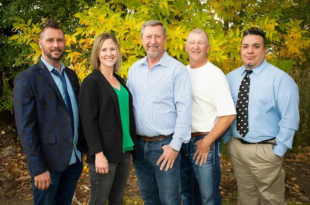Colorado Farm and Ranch Insurance

8:30am - 5:00pm Mon-Fri
We'll Reply in 15min*
Index
Contact Us
Phone
303-421-5123
Location
9035 Wadsworth Parkway
Suite 2730B
Westminster, CO 80021
Farming and ranching are integral parts of Colorado's economy and cultural heritage. With vast expanses of farmland and ranches, the state is a hub for agricultural activities. However, with these opportunities come risks that can threaten the livelihood of farmers and ranchers. This is where farm and ranch insurance becomes essential. Understanding the nuances of farm and ranch insurance in Colorado can help protect your investments and ensure the continuity of your operations.
Understanding Farm and Ranch Insurance
Farm and ranch insurance is a specialized type of coverage designed to protect agricultural operations. Unlike standard homeowner's insurance, it caters to the unique needs of farms and ranches, covering both personal and commercial aspects. This type of insurance typically includes coverage for dwellings, personal property, farm equipment, livestock, and liability.
In Colorado, the diverse climate and terrain present unique challenges to farmers and ranchers. From unpredictable weather patterns to wildlife interactions, the risks are varied. Insurance policies are tailored to address these specific challenges, providing peace of mind to those in the agricultural sector.
Farm and ranch insurance policies are highly customizable. They can be adjusted to fit the size and scope of your operations, whether you run a small hobby farm or a large commercial ranch. Understanding the components of these policies is crucial to ensure comprehensive coverage.
Components of Farm and Ranch Insurance
Farm and ranch insurance policies are composed of several key components. Each component addresses different aspects of the farm or ranch, ensuring that all potential risks are covered. The main components typically include property coverage, liability coverage, and additional endorsements.
Property coverage protects the physical assets of the farm or ranch. This includes buildings, equipment, and livestock. It ensures that in the event of damage or loss, the financial impact is minimized. Liability coverage, on the other hand, protects against legal claims arising from injuries or damages caused by farm operations. This is crucial for safeguarding against lawsuits that could otherwise be financially devastating.
Additional endorsements can be added to tailor the policy further. These might include coverage for specific types of livestock, crops, or equipment. Understanding these components and how they apply to your specific situation is key to crafting an effective insurance policy.

How to Choose the Right Insurance Policy
Choosing the right farm and ranch insurance policy involves assessing your specific needs and risks. Start by evaluating the size and scope of your operations. Consider the types of crops or livestock you manage, the equipment you use, and the potential risks you face. This will help you determine the level of coverage you require.
Consulting with an insurance agent who specializes in agricultural policies can be invaluable. They can provide insights into the types of coverage that are most relevant to your operations and help you navigate the complexities of policy options. An experienced agent will also be familiar with the specific challenges faced by Colorado farmers and ranchers, ensuring that your policy is tailored to local conditions.
It's also important to compare policies from different providers. Look at the coverage options, premiums, and any additional benefits offered. This will help you find a policy that offers the best value for your investment. Remember, the cheapest policy is not always the best; comprehensive coverage is essential for protecting your livelihood.
Evaluating Coverage Options
When evaluating coverage options, consider the specific risks associated with your farm or ranch. For instance, if you operate in an area prone to wildfires, ensure that your policy includes coverage for fire damage. Similarly, if you have a large number of livestock, consider adding endorsements for animal mortality or theft.
Review the policy limits and deductibles carefully. Ensure that the coverage limits are sufficient to cover the replacement cost of your assets. A lower deductible might result in higher premiums, but it can also provide greater financial protection in the event of a claim.
Additionally, consider the reputation and financial stability of the insurance provider. A company with a strong track record and financial stability is more likely to provide reliable coverage and prompt claims processing. Research customer reviews and ratings to gauge the experiences of other policyholders.
Common Risks Faced by Colorado Farmers and Ranchers
Colorado farmers and ranchers face a variety of risks that can impact their operations. Understanding these risks is crucial for selecting the right insurance coverage. Weather-related risks are among the most significant, with hail, drought, and floods posing threats to crops and livestock.
Wildlife interactions are another common risk, particularly for ranchers. Predators such as coyotes and mountain lions can pose threats to livestock, while deer and other wildlife can damage crops. Insurance policies can include coverage for these types of losses, providing financial protection against such events.
Market fluctuations and economic conditions also impact the agricultural sector. Price volatility for crops and livestock can affect revenue, while changes in regulations can impact operational costs. While insurance cannot prevent these risks, it can provide a safety net that helps manage financial uncertainty.
Weather-Related Risks
Colorado's diverse climate means that weather-related risks vary significantly across the state. In the eastern plains, hailstorms are a common threat to crops, while the western regions may face drought conditions. Insurance policies can include coverage for crop damage due to hail, drought, and other weather events.
Flooding is another risk, particularly in areas near rivers and streams. Flood insurance can be added to a farm and ranch policy to protect against losses due to water damage. Understanding the specific weather risks in your area is essential for selecting the appropriate coverage.
Wildlife and Predation Risks
Wildlife interactions are a significant concern for Colorado ranchers. Predators such as coyotes, bears, and mountain lions can pose threats to livestock. Insurance policies can include coverage for livestock loss due to predation, helping to mitigate the financial impact of such events.
In addition to predation, wildlife can also cause damage to crops. Deer and other animals may feed on crops, leading to significant losses. Insurance can provide coverage for crop damage due to wildlife, ensuring that farmers are protected against these risks.

Steps to File a Claim
Filing a claim is a critical step in the insurance process. Understanding the steps involved can help ensure a smooth and efficient claims experience. The first step is to document the damage or loss. Take photographs and gather any relevant documentation, such as receipts or invoices, to support your claim.
Next, contact your insurance provider as soon as possible. Provide them with all the necessary information and documentation to initiate the claims process. Your insurance agent can guide you through the process and help you understand what to expect.
Once the claim is filed, an adjuster will assess the damage and determine the extent of coverage. They will work with you to ensure that the claim is processed promptly and fairly. It's important to maintain open communication with your insurance provider throughout the process to address any questions or concerns.
Documentation and Reporting
Accurate documentation is essential for a successful claim. Keep detailed records of all farm and ranch operations, including inventory, equipment, and livestock. This information will be invaluable in the event of a loss, as it provides evidence of the assets covered by your policy.
Report any losses or damages to your insurance provider as soon as possible. Delays in reporting can complicate the claims process and may affect the outcome. Be prepared to provide detailed information about the incident, including the date, time, and circumstances of the loss.
Working with an Adjuster
An insurance adjuster will evaluate the damage and determine the extent of coverage. They will inspect the property, review documentation, and assess the value of the loss. It's important to cooperate fully with the adjuster and provide any additional information they may require.
Maintain open communication with the adjuster throughout the process. Ask questions if you are unsure about any aspect of the claim, and seek clarification if needed. A positive working relationship with the adjuster can help ensure a fair and timely resolution to your claim.
Conclusion
Farm and ranch insurance is an essential tool for protecting the livelihoods of Colorado's farmers and ranchers. By understanding the components of these policies, evaluating coverage options, and being aware of the common risks faced, you can make informed decisions that safeguard your operations. Whether you are a seasoned rancher or a new farmer, having the right insurance coverage provides peace of mind and financial security in the face of uncertainty.
REQUEST A QUOTE
Get a farm and ranch insurance quote online today!
Farm and Ranch Insurance
We will get back to you as soon as possible.
Please try again later.
3R Insurance | Top-Rated Insurance Agency in Colorado
9035 Wadsworth Pkwy Suite 2730-B, Westminster, CO 80021
Latest Post
Insurance Coverage
Business Hours
Monday 8:30 AM–5 PM
Tuesday 8:30 AM–5 PM
Wednesday 8:30 AM–5 PM
Thursday 8:30 AM–5 PM
Friday 8:30 AM–5 PM
Saturday Closed
Sunday Closed
All Rights Reserved | 3R Insurance Agency Privacy Policy | Legal Disclaimer
The collection of your phone number via this page is used for all communications between you and us through voice and messaging.





